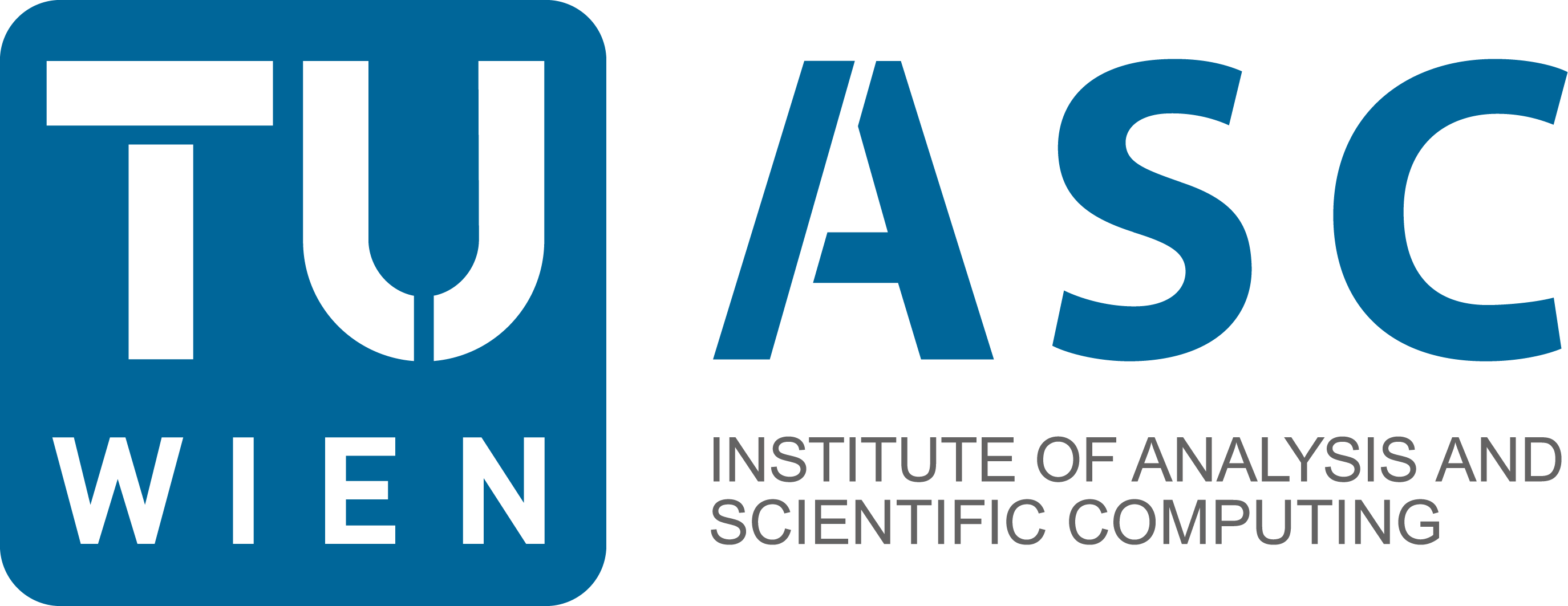19. Runge-Kutta methods#
Recall the integral formulation of the ODE on time interval \([t_i, t_{i+1}]\):
The goal of Runge-Kutta methods is to obtain higher accuracy by using more accurate numerical integration rule:
where
\(s\) is called the number of stages
\(c_j, b_j\) are points and weights of the quadrature rule
\(y_i^j\) are approximations to \(y(t_i + c_j \tau)\), which are also unknown
The exact values at the stage-points are
Again, we use numerical integration to define the numerical stage values (skipping the index \(i\)):
We use the same integration points as above, however the weigths are adjusted to the smaller interval such that
A particular RK method is completely defined by providing the \(a\), \(b\), and \(c\) coefficients, which are usually given in the so called Butcher tableau:
Instead of having the \(y^j\) as unknonws, one often solves for \(k\)-values (\(k\) like slope):
and then
19.1. Explicit RK methods#
Explicit RK methods can be seen as extension of the explicit Euler method. The \(a_{jk}\) coefficients form a strictly lower triangular matrix.
Examples are
the \(RK_2\) - method, aka the explicit mid-point rule
\[\begin{split} \begin{array}{c|cc} 0 & 0 & 0 \\ \frac{1}{2} & \frac{1}{2} & 0 \\ \hline & 0 & 1 \end{array} \end{split}\]It is evaluated as
\[\begin{split} \begin{array}{rcl} y^0 & = & y_i \\ y^1 & = & y_i + \tfrac{\tau}{2} f(t_i, y^0) \end{array} \end{split}\]and then
\[ y_{i+1} = y_i + \tau f(t_i+\tfrac{h}{2}, y^1) \]Evaluation in \(k\)-values:
\[\begin{split} \begin{array}{rcl} k^0 & = & f(t_i, y_i) \\ k^1 & = & f(t_i+\frac{\tau}{2}, y_i + \frac{\tau}{2} k^0) \end{array} \end{split}\]and then
\[ y_{i+1} = y_i + \tau k^1 \]the \(RK_4\) - method, aka THE classical Runge Kutta method
and then
and then
19.2. Implicit Runge Kutta methods#
Methods of optimal accuracy are obtained based on Gaussian quadrature:
Gauss-Legendre 2 method:
If not all time-scales are resolved, then \(c_s = 1\) leads to better stability (i.e. L-stability). The other points are chosen for optimal accuracy. These methods are called Radau IIA.
Two-point Radau IIA method:
Many examples can be found here: Butcher tableaus examples.
19.3. Implementation of a Runge-Kutta time-stepper for arbitrary Butcher tableaus.#
They are implemented in ASC-ODE, branch RungeKutta. Merge that branch into your main branch:
git remote add upstream https://github.com/TUWien-ASC/ASC-ODE.git
git fetch upstream
git merge upstream/RungeKutta
Solve a non-linear system of equations for \(k^0, \ldots k^{s-1}\) such that
This system of equations is rewritten in compact form for the unknown \(k \in {\mathbb R}^{sn}\):
Where
\(k = (k^0, \ldots k^{s-1})\), with \(k^j \in {\mathbb R}^n\)
\(\tilde y_i = (\underbrace{y_i, \ldots , y_i}_{s-{\text times}}) \in {\mathbb R}^{sn}\)
\(\tilde f : {\mathbb R}^{sn} \rightarrow {\mathbb R}^{sn} : (x_0, \ldots, x_{s_-1}) \mapsto (f(x_0), \ldots, f(x_{s-1}))\)
for \(A \in {\mathbb R}^{h \times w}\) define \(A \otimes : {\mathbb R}^{wn} \rightarrow {\mathbb R}^{hn} : (x_0, \ldots, x_{w-1}) \mapsto (y_0, \ldots , y_{h-1})\) such that \(y_j = \sum_l a_{jl} x_l\).
We derive two classes from NonlinearFunction for that (named MultipleFunction and MatVecFunc).
Setup the Runge-Kutta time-stepper, and solve the ODE.
19.3.1. Runge-Kutta methods of arbitrary order#
If we have fixed the integration points \(c_j\), we can compute the \(a_{jl}\) and \(b_j\) coefficients such that the integration rules are (at least) exact for polynomials up to order \(s-1\):
and
Setup and solve linear equations for computing the \(a\) and \(b\) coefficients.
Use the \(c\)-coefficients from Gauss-Legendre 2, and two-point Radau IIA, and check whether you recover the same \(a\) and \(b\) coefficients.
Try \(c\)-coefficients from Gauss-Legendre 3, and three-point Radau II A (from the web-page above).
Then, find \(c\)-coefficients by solving for the roots of Legendre-polynomials, and transform to \([0,1]\). A ready to use function can be taken from Numerical recipes, section 4.6
Similar for the Radau IIA: Find roots of the \(P^{(1,0)}\) Jacobi-polynomial, transform to \([0,1]\), and add \(c_j=1\).
This is done by function gaujac from Numerical recipes. The logarithmic-gamma function is lgamma in C++.
19.4. Exercises#
Try out and compare various Runge-Kutta methods already implemented for the examples above.
Implement and test an
ExplicitRungeKuttatime-stepper for arbitrary Butcher tableaus (with a lower triangular matrix for the \(a\)-coefficents).
